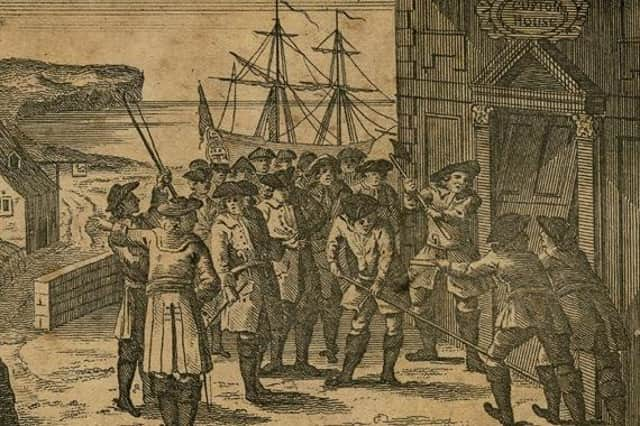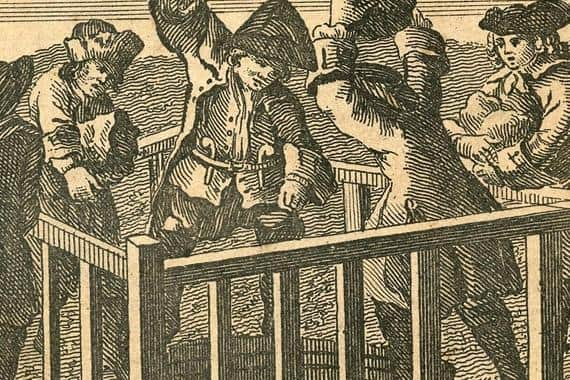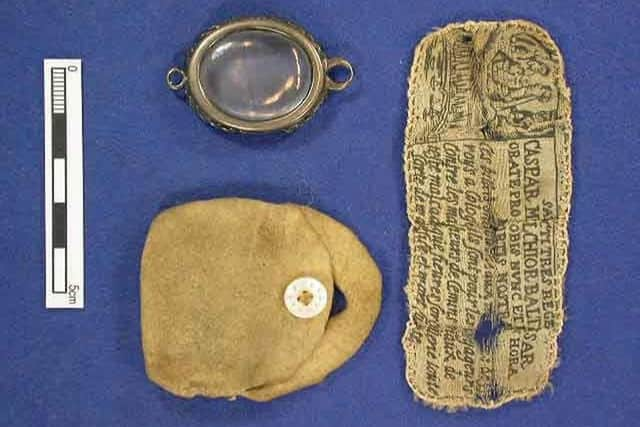The Hawkhurst Gang and how their smuggling came to an end in Chichester


Contraband was landed on virtually every holiday beach from Whitstable round to the Witterings and beyond. Chichester’s shores have considerable natural advantages to smuggling along the coastline. The great tidal estuaries which form Langstone, Chichester and Pagham Harbours provided sheltered and secluded landing sites and the racing tide through each narrow harbour entrance could be utilised to transport in rafts or floating tubs.
The Hawkhurst smugglers were perhaps the most famous gang of smugglers operating along the south coast during the 18th century. They were known to have operated all along the south coast from Kent to Dorset. The end came for them in the Chichester Guildhall in 1749 when seven of their ringleaders were tried, convicted and executed for the brutal murders of William Galley and Daniel Chater.
Advertisement
Hide AdAdvertisement
Hide AdThe beginnings of this incident date back to September 1747, when the boat Three Brothers, carrying a consignment of tea, brandy and other contraband was intercepted by customs officers. The crew escaped but the goods were seized and taken to Poole customs house. On the night of October 6, the gang resolved to reclaim their goods and quickly set to work, breaking open the doors and seizing some two tons of tea but were unable to transport the casks of spirits.


Dividing up the tea among them, they set off in convoy for Brook in the New Forest. On route, one smuggler named John Diamond spotted Daniel Chater, whom he knew from having worked together previously to bring in the harvest, greeted him and gave him some tea.
Diamond was later arrested and held in Chichester gaol as a suspect in the Poole raid and Chater was quickly regarded as a key witness in any trial. William Galley, a minor customs official, was dispatched to escort Chater to Chichester to identify Diamond.
They set out together on Valentine’s Day 1748, making it as far as the White Hart Inn, in Rowland’s Castle, an unfortunate stopping point, as it was run by a family with strong links to the Hawkhurst gang. The landlady soon became suspicious of the pair and delayed their departure while she sent a message to William Jackson and William Carter, smugglers who lived nearby.
Advertisement
Hide AdAdvertisement
Hide AdThey soon arrived with a number of other smugglers in tow, before plying the two with drink and causing them to pass out. After a brief discussion of what to do with them, Jackson woke the victims by raking them across their faces. The unlucky pair were then driven outside by lashes from horse whips and placed double upon a horse with their feet tied together under the animal’s belly. The lashings continued as the horse was led along the five-mile trek and on several occasions, the two slid underneath the horse and received kicks to the head from hooves as well.


Eventually, Galley could take it no more and fell, apparently lifeless, from the saddle. The group continued until they reached Rake and the smugglers carried Galley’s body into the woods and buried it. When the body was later found and exhumed, it was discovered that Galley had still been alive when buried and had awoken after being interred.
For the smugglers, this still left the problem of Chater. For three days he remained chained up in a turf house while the gang decided what to do with him. After a secret meeting, it was decided to do what had originally been planned, to kill him and dump his body down a well. Upon arriving at the well, an abortive attempt was made to hang Chater but the rope proved too short, so they threw him down the 30ft drop, and hurled large stones and fence posts down upon him until the groaning stopped.
The two victims were soon missed but an investigation was unable to find any trace of them, until an anonymous letter arrived leading them to Galleys body. A second soon followed naming William Steel as one of the perpetrators. Upon his arrest, Steel named all the others involved; another man who played a minor role in the affair also turned himself in and gave evidence, and very soon the whole group had been rounded up.
Advertisement
Hide AdAdvertisement
Hide AdAll in all, seven men appeared before the Assize court in the Guildhall, and all seven were convicted and sentenced to be hanged the following day on the Broyle just north of Chichester. Jackson managed to escape execution as he died in custody the night before the sentence was to be carried out. The remaining six were all executed as planned and the bodies of the five principal offenders were displayed in gallows around the district as a warning.
On the site of the execution, in Broyle Road, there still stands the smugglers stone which was erected shortly afterwards ‘as a memorial to posterity and a warning to this and succeeding generations’ and it states’ this stone is erected AD1749’.
The Novium Museum has several objects related to the Hawkhurst gang, including a talisman belonging to William Jackson, which was found in his cell in Eastgate gaol after his death. This can be seen on display on the first floor of the museum.
During February half term, the museum will be running an array of pirate and smuggling themed family activities, including interactive storytelling, craft, and a treasure trail. For more information, visit www.thenovium.org/whatson